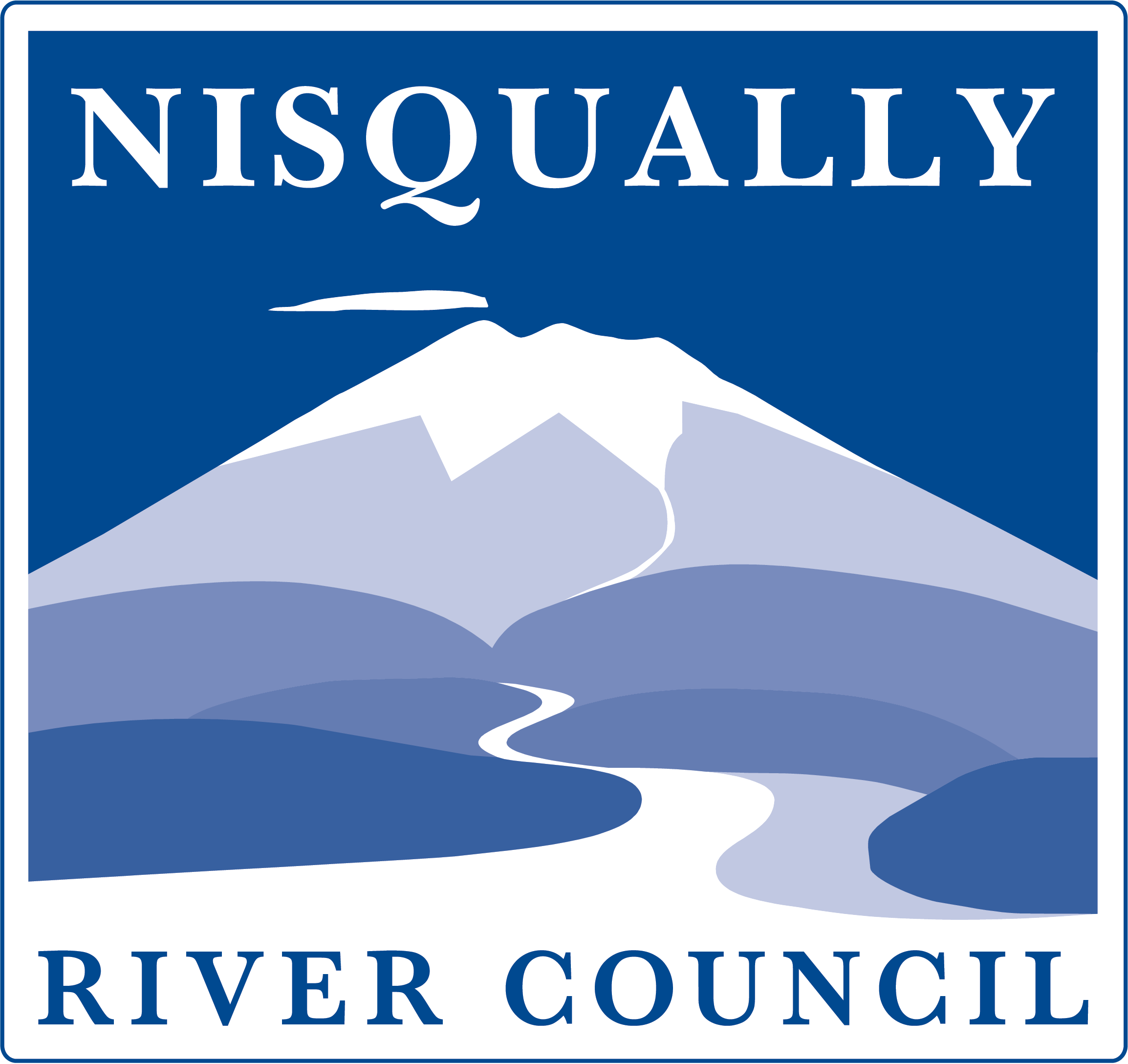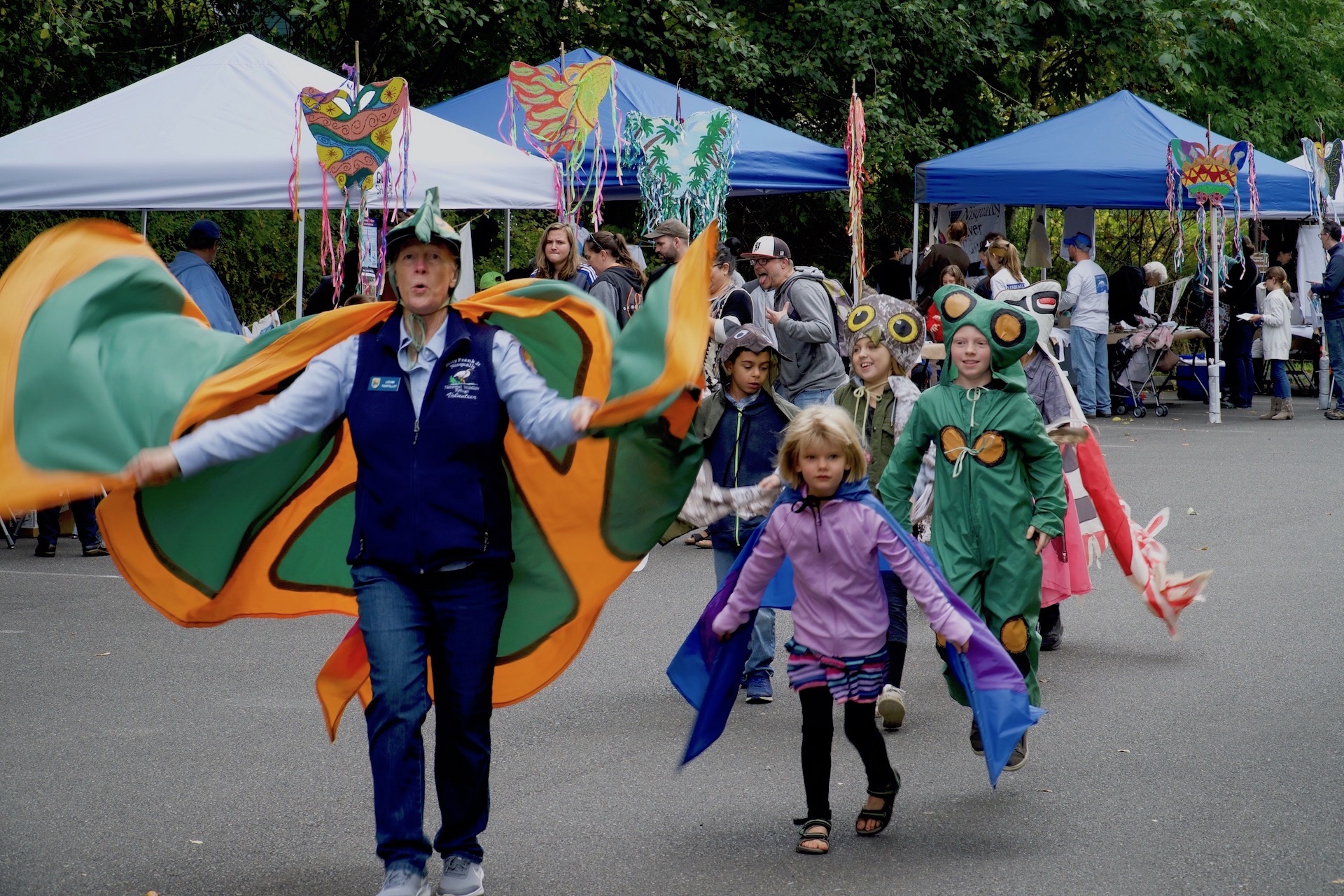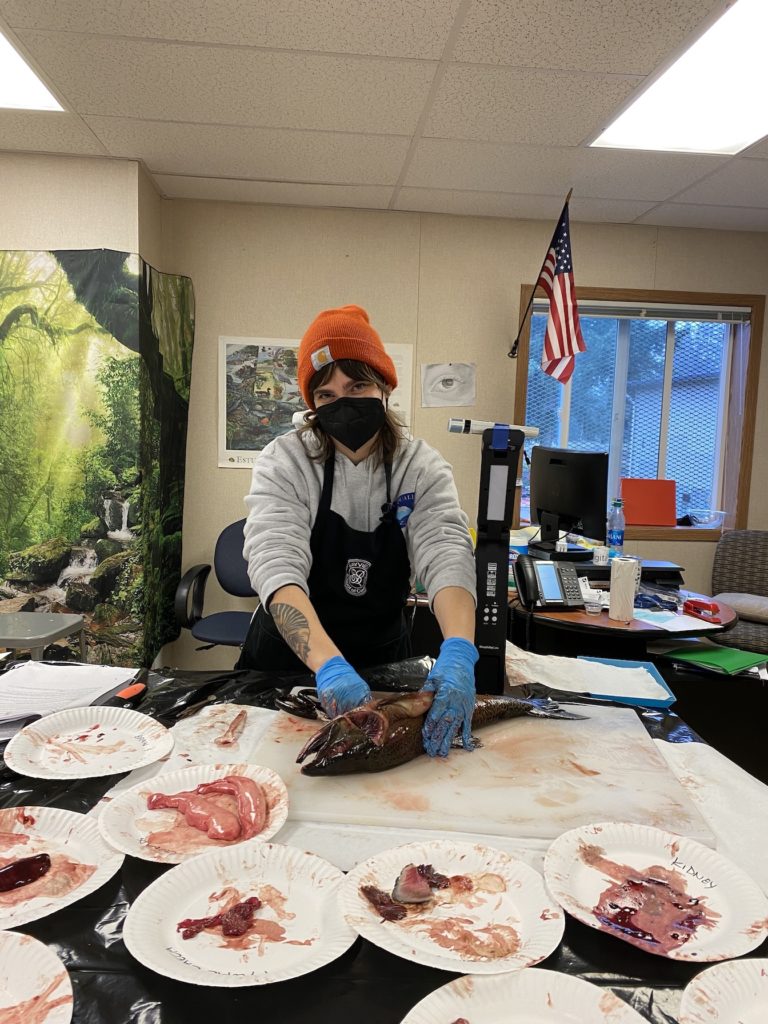
This December, the NREP team has been busy with salmon dissections! These last few weeks we were able to visit 10 science class periods at Nisqually Middle School and 8 classes at various local elementary schools to demonstrate salmon dissections for students. Our salmon were graciously donated to us by the Nisqually Tribe from their Kalama Creek Hatchery. They provided us with a mix of male and female, so students were able to make predictions about the salmon’s sex before we cut it open to reveal the eggs or gonads. It’s never a dull moment when we make the first cut into the fish’s stomach and thousands of beautiful orange eggs spill out! While dissecting the male salmon may not be as show stopping, students were still amazed to learn about the reproductive processes of these incredible animals.
Nantz with the Coho we dissected
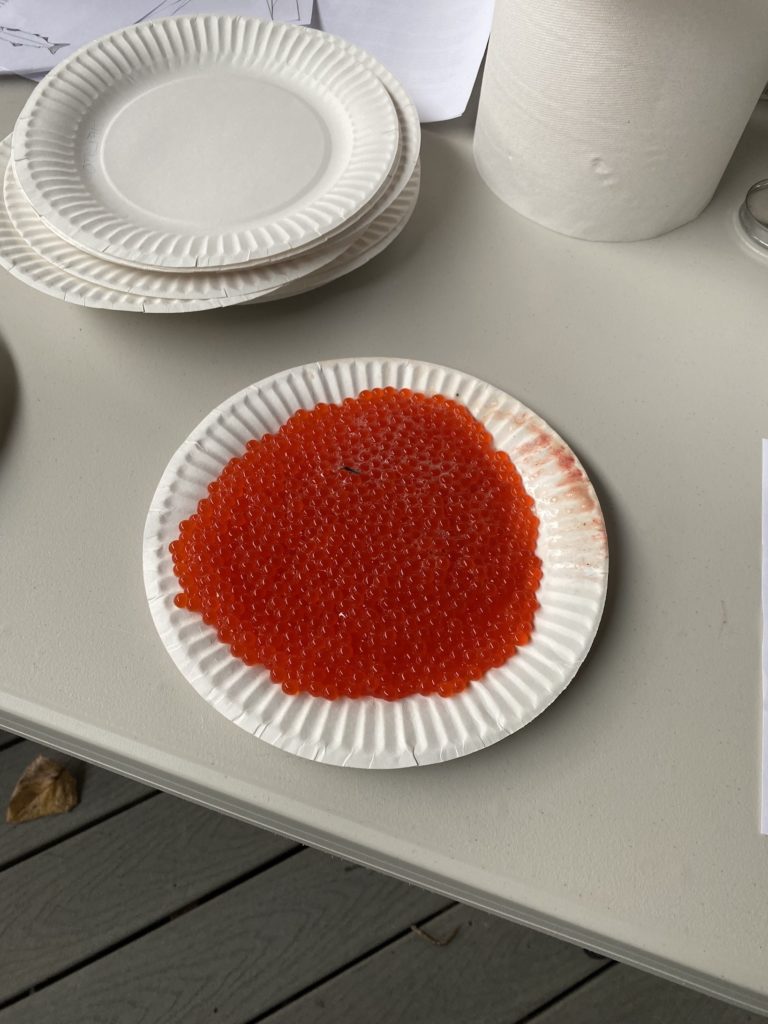
Along with learning more about the salmon life cycle, we went through the rest of the internal organs and their functions, and how pollution impacts these fish. Many of the salmon’s internal organs are the same as humans; among these are a heart to pump blood, a liver to filter toxins, a spleen to produce white and red blood cells, and a brain to control every process that keeps the salmon alive. Some distinct differences between salmon and human anatomy that the students learned about was the presence of a pyloric caeca, which increases the surface area of the salmon’s digestive tract, and the fact that salmon don’t have ears! Instead, they have two otoliths – tiny bones inside their skull that allow them to sense the vibrations of their surroundings. Humans have otoliths as well, but ours are inside our eyes and help us to sense gravity and movement.
Did you know one female salmon can produce up to 5,000 eggs?
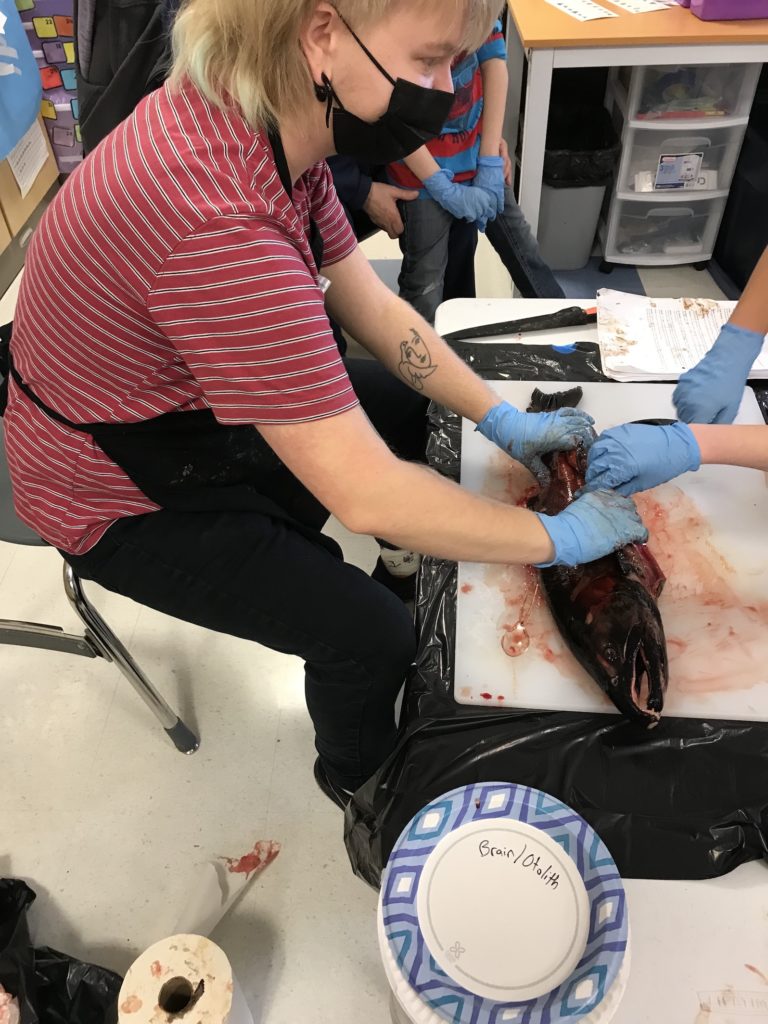
We were lucky to get enough salmon for the middle school students to be able to dissect salmon along with us in small groups. This allowed them to get up close and personal with the fish to see just how interesting this species is. Our goal in doing salmon dissections is not only to learn more about the anatomy and functions of salmon, but also to provide more context for why salmon conservation is so important. Our other events and programs teach students how to be good watershed stewards by protecting river systems, planting trees, and collecting data to share with environmental organizations, but salmon dissection gives students an opportunity to learn from and empathize with the salmon. By exploring salmon through the lens of dissection, we develop a better understanding of how to care for these animals and their environment on a more personal level. We have lots of other awesome events coming up after winter break, so stay tuned for more learning opportunities!
Layne showing off the inside of a salmon to students
